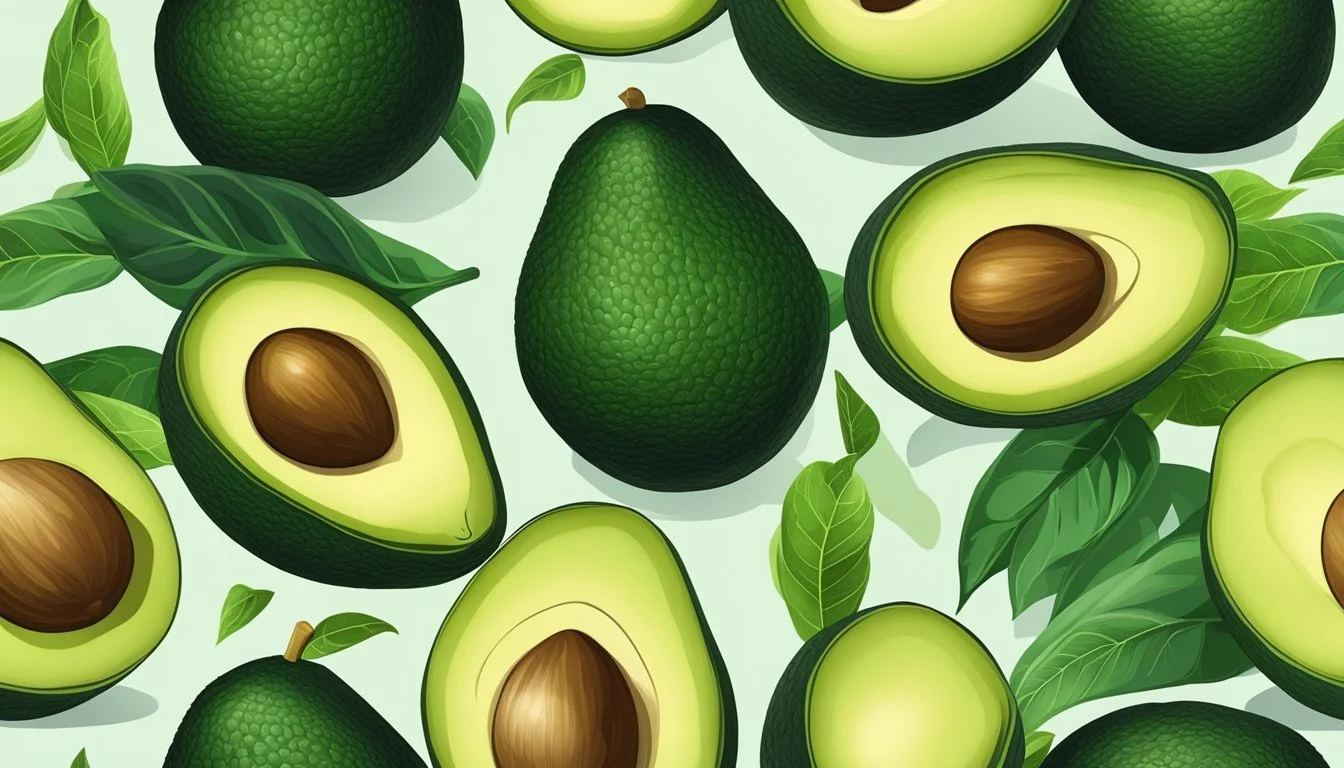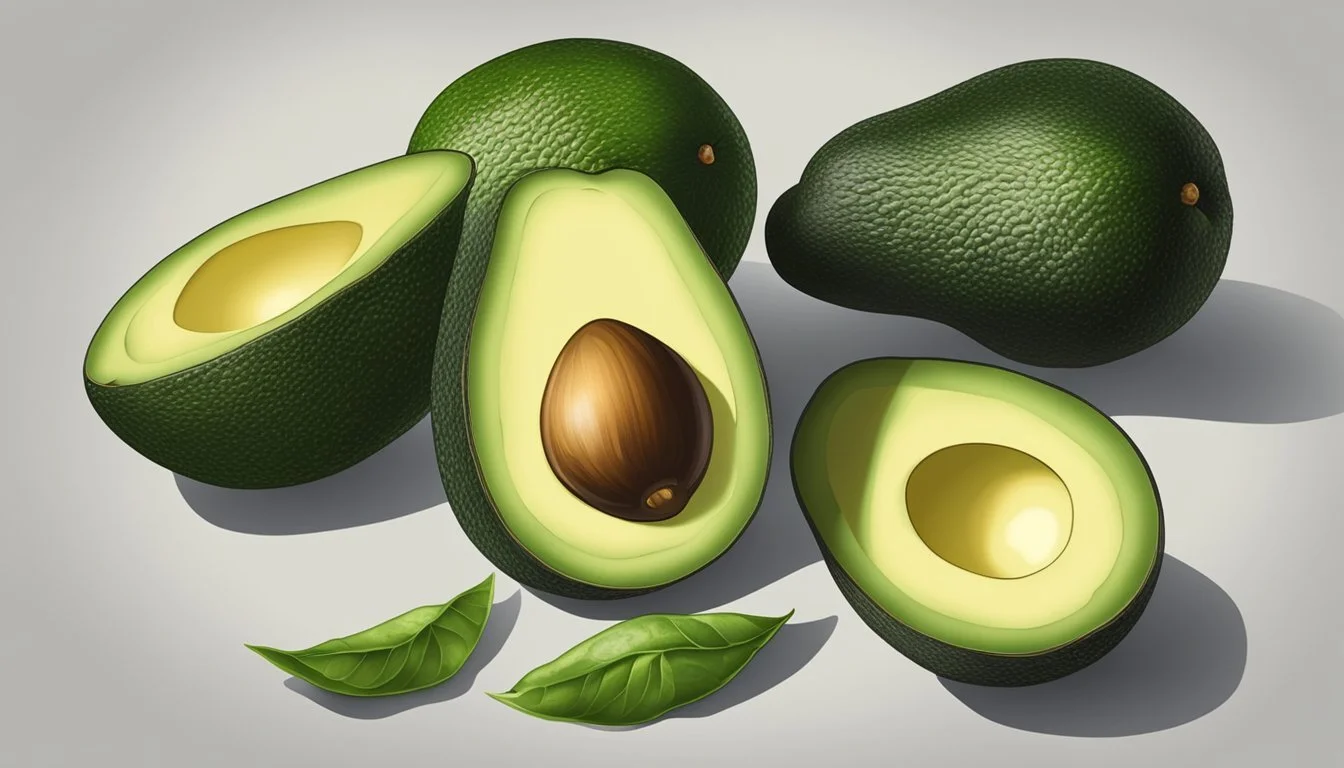How to Tell If Gwen Avocados Are Ripe
A Guide to Selecting the Perfect Fruit
Determining the ripeness of Gwen avocados is essential for both culinary professionals and home cooks aiming to use the fruit at its peak of flavor and texture. Gwen avocados, a variety similar to the well-known Hass but larger and with a thicker skin, can be particularly challenging to judge for ripeness due to their unique characteristics. However, there are telltale signs and simple techniques one can employ to reliably assess whether or not the fruit is ready to be consumed.
By understanding the specific cues – such as color, feel, and other indicators – you can ensure that you're selecting avocados that are perfectly ripe. This expertise not only enhances the quality of the dishes in which the avocados are used but also prevents waste and the disappointment that comes from cutting into an underripe or overripe avocado.
Key Takeaways
Determining ripeness is crucial for the best use of Gwen avocados.
Proper techniques can identify if the fruit is ready to eat.
Knowledge about avocados ensures optimal taste and reduces waste.
Identifying Ripe Gwen Avocados
When selecting a Gwen avocado, one must be mindful of its unique characteristics to ensure optimal ripeness and flavor.
Color and Skin Texture
A ripe Gwen avocado will maintain a green coloration, contrasting from the Gwen's unripe bright green to a darker, more golden hue. The skin should have a bumpy, pebbly texture. Unlike Hass avocados that darken as they ripen, the Gwen's color can be less of a reliable indicator, so one should also assess the texture.
Feel and Firmness
To judge ripeness, apply gentle pressure to the avocado. A ripe Gwen avocado will yield to gentle pressure without feeling mushy. It should feel firm but not hard. Overripe avocados may feel too soft and may have localized spots that are significantly softer than the rest of the fruit.
Checking the Stem and Nub
Removing the small stem or nub at the top can also indicate ripeness. If the area beneath is green, the avocado is likely ripe. If it's brown, the fruit may be overripe. However, if the stem does not come off easily, the avocado is not yet ripe.
Overall Weight and Size
A ripe Gwen avocado will typically feel heavier than it appears, a sign that it's full of ripe, creamy flesh. Gwen avocados are generally larger, ranging between 6 and 15 ounces, with a uniform, oval shape.
Smell Assessment
Bringing the avocado close to the nose, one may detect a mildly fruity smell if it's ripe. Avocados that are unripe will lack this scent, whereas an overripe fruit might have an off or overly strong odor.
Storing and Ripening Avocados
Selecting the perfect Gwen avocado requires understanding not only how to identify when it is ripe but also how to store and ripen it effectively. This section discusses specific methods to achieve perfect ripeness.
At Room Temperature
An underripe, firm avocado will ripen best at room temperature over a few days. This environment encourages the natural release of ethylene gas, which is necessary for the ripening process. Store these green avocados on a countertop away from direct sunlight.
Refrigeration Tips
Once ripe, avocado's shelf life can be extended by storing it in the refrigerator. The cold environment slows down the ripening process, preserving the ripe avocado's desired, soft texture for longer. Refrigeration is ideal for avocados that will not be consumed immediately.
Ripening with Other Produce
To speed up ripening, store the avocado with a banana or an apple. These fruits emit ethylene gas, which promotes faster ripening of nearby produce. Keeping them in close proximity in a fruit bowl can reduce the ripening time.
The Brown Paper Bag Method
For an even quicker method, place the avocado in a brown paper bag with a banana or apple. The bag traps the ethylene gas, concentrating it around the avocado, which enhances the ripening process. Check daily for softness to ensure the avocado does not overripen.
Ripening Stages in the Oven or Microwave
Although not the recommended route, a hard avocado can be softened using a microwave or an oven for immediate use. While this softens the fruit, it may not develop the same flavor as a naturally ripened avocado. Microwaving involves heating the avocado for about 30 seconds, while oven exposure should be brief and at low temperature, monitoring frequently to avoid cooking the fruit.
Preparing Ripe Avocados for Use
When working with ripe Gwen avocados, specific techniques can help preserve the rich flavor and vibrant green flesh, preventing food waste and ensuring the best culinary creations.
Slicing Techniques
To slice a ripe avocado, first, ensure its firmness indicates ripeness without being mushy—indicative of overripe fruit. Place the avocado on a cutting board and make a lengthwise cut around the seed, using a sharp knife. Twist the halves apart. The green flesh should reveal a creamy texture that's neither too soft nor too firm.
Pitting and Dicing Methods
After slicing, remove the pit with a spoon or gently tap the knife into the pit and twist. To dice, score the flesh without piercing the skin using the knife, and then use a spoon to scoop out the avocado cubes. For uniform dicing, make even, parallel cuts in both directions.
Avocado Preservation Tactics
To preserve a cut avocado, sprinkle lemon juice or lime juice over the exposed flesh to prevent browning. Wrap tightly with plastic wrap or store in an airtight container. To freeze, mash the avocado with a dash of citrus juice and place in freezer bags, removing air before sealing. This maintains freshness and extends shelf life.
Mashing for Guacamole and Spreads
For guacamole or spreads, mash the ripe avocado with a fork until reaching the desired consistency. Ripe avocado is best for a creamy texture. Incorporate spices and additional ingredients like diced tomatoes or onions to enhance the rich flavor of the guac or spread.
Serving Avocado in Salads and Dishes
Gwen avocados add a smooth, buttery texture to salads and various dishes. Slice ripe avocados and add them to avocado toast, complement them with bacon, or tuck slices into a chicken sandwich. Ensure the avocado is ripe to inject each recipe with its characteristic rich flavor.
Avoiding Common Pitfalls
When selecting Gwen avocados, a variety with creamy flesh and nutty flavor, shoppers often encounter challenges. This section provides guidance on identifying overripe or rotten fruits, preventing damage, adhering to optimal storage practices, and recognizing underripe avocados.
Determining Overripe or Rotten Avocados
To detect overripe or rotten avocados, examine the fruit for mushy textures and uneven soft spots, which could indicate spoilage. An overripe avocado may also have dark blemishes or brown mushy flesh when cut open. These are signs that the avocado may not provide the best eating experience.
Preventing Bruising and Damage
Avocados bruise when subjected to rough handling or excessive pressure. To avoid this:
Use the palm of your hand to apply gentle pressure, rather than fingertips which can cause indentation and bruising.
Do not squeeze the avocado in just one spot; inspect the whole fruit by rotating it in the palm of your hand.
Optimal Storage Practices
To extend the shelf life of a ripe avocado:
Store ripe avocados in the refrigerator to slow down the ripening process.
Keep unripe avocados at room temperature until they reach optimal ripeness.
Proper storage ensures maximum freshness and prevents premature spoilage.
Signs of Underripe Avocados
An underripe Gwen avocado feels firm, and may be too green or hard, making it difficult to yield to gentle pressure. An underripe fruit lacks the creamy texture and rich flavor of a ripe avocado, but can be ripened at room temperature over several days.
Recipes and Culinary Creations
Perfectly ripe Gwen avocados offer a rich flavor and creamy texture that can transform any recipe into a gourmet experience. Each culinary creation below will guide you on how to incorporate ripe avocados into your cooking, highlighting their unique moisture and oil content.
Classic Guacamole Recipe
To make a classic guacamole, one needs ripe avocados that yield to gentle pressure. Ingredients for a basic guac include:
3 ripe Gwen avocados
1 lime, juiced
1 small onion, finely chopped
A handful of cilantro, chopped
Salt to taste
Mash the avocados and mix with lime juice, onion, and cilantro. Add salt to bring out the flavors. Serve with tortilla chips for a simple, yet delicious dip.
Healthy Avocado Toast Variations
Avocado toast starts with a base of well-toasted bread, preferably whole grain for added nutrition. Top it with slices of ripe avocado with a sprinkle of:
Red pepper flakes
Sea salt
A drizzle of olive oil
For variation, one might add sliced tomatoes, radishes, or even a poached egg.
Avocado Salads and Dressings
Ripe avocados add a creamy element to salads and can be the base of a lush dressing. A basic avocado dressing includes:
1 ripe avocado
1/4 cup of lime or lemon juice
Salt and pepper to taste
Water for consistency
Blend until smooth and drizzle over your favorite greens. Cubed ripe avocados in salad offer bursts of rich flavor and pair well with vinaigrettes.
Main Dishes with Avocado
Add slices or cubes of ripe avocado to main dishes with beef, chicken, or bacon. The avocado's green skin signals it's ripe and ready to eat, so fold into warm foods right before serving to preserve its texture.
Innovative Avocado Desserts
Desserts with avocado are on the rise, where ripe avocado's sweet flavor profile can be showcased. Consider avocado:
Chocolate mousse
Ice cream
Cheesecake
Process ripe avocados until smooth, then fold into your dessert mixture for a dessert that's rich and full of creamy sweetness.



